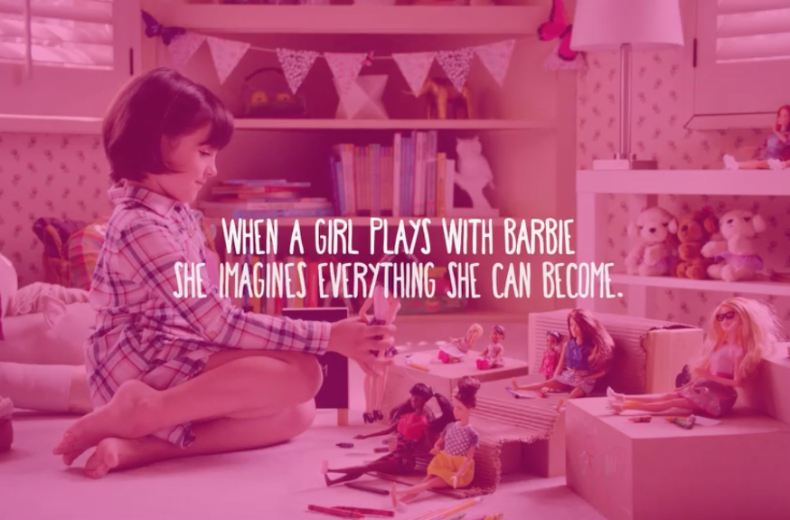
How can brands use music to overcome generational tensions?
Joanna Barnett, Strategy Director at Truant, on the power of music to bring people closer together and broaden a brand’s appeal.
The world’s changing, are you?


2016 was a tumultuous year. The economic, cultural and environmental impacts of major global events have changed the world. Or perhaps made visible a world that was already different? Before we dive head first into this year, let's pause for a moment.
Most of us may feel uncertain about the future, but what can we do about it? When we start to lose faith in governments and existing systems, let's see this as an opportunity to navigate and reshape our own societies.
Real-time information sharing gives us the power to make our own networks, outside of those prescribed by governing powers. Last year a new app, Gershad, was developed to help Iranians avoid the morality police. Locals can pinpoint checkpoints using geolocation data, helping them to regain control over their right to dress as they please.
Using similar technology, Amnesty International released an interactive map to crowd-source incidents of gun violence in Rio de Janeiro. With the police themselves responsible for one in five killings in the state, accurate official statistics on gun violence are hard to get.
This January let's not get distracted by the shiny new toys at CES. Put the drones, driverless cars and 3D printing on pause, and take a moment to think about the issues really affecting your customers. What excites them? What are they afraid of? Whether it’s re-evaluating values, or re-designing products, there’s an opportunity for brands to find new relevance in this new world.

After 10 straight quarters of declining profits, Barbie realised that they needed to re-align their values. Whilst their philosophy has always been that through the doll a girl can be anything she wants to be, her unrealistic body shape, lack of multiculturalism and the fact she aspired to a dream Malibu house and sports car, did not resonate with girls of today.
Their latest campaign ‘You can Be Anything’ brings the brand’s original values to the forefront, and TV ad ‘Imagine the Possibilities’ shows young girls playing at careers from a veterinarian to a scientist.
Barbie’s target audience are at their most impressionable age, so the brand has a responsibility to portray a positive and empowering message through their products as well as their comms. This led Mattel to launch Fashionistas, a range of dolls that come in tall, petite and curvy, and span a range of hair and skin tones.
With its 2016 Fashionistas, Mattel made it easier for girls to find a doll that looked just like them, and crucially made Barbie inclusive and relevant for a 21st century multicultural world.
Agency: BBDO, San Francisco


Realising that attitudes towards financial institutions were at an all-time low, Finnish Financial institution, Bank of Åland, wanted to reposition themselves as a responsible player. They developed the Baltic Sea Project credit card and Aland Index, a way of using data to calculate the individual carbon footprint of each transaction, and thus creating the first bank index for everyday environmental impact. Each statement comes with options to offset your carbon footprint locally, globally or by lifestyle. The idea reaches beyond existing clients. Already businesses from 10 different countries have enquired about using the index within their own sector. By re-positioning their values, Aland has more relevance for their environmentally conscious customers.
Agency: RBK Com, Stockholm

Following partnerships with The Red Cross in countries from Australia to America, Uber set their sights on the Sri Lanka Red Cross Society. Leveraging their network for good, the global taxi company’s first venture gave customers the opportunity to donate school provisions using the Uber app. Packages could be collected by drivers and delivered to rural schools spread out across the island. More recently they’ve expanded the remit, using their network to deliver free flu-fighting care packages and relief parcels for flood victims.
Agency: In-house

Italian Insurance company Groupama’s latest campaign ‘SantinoSafetySystem’ helps prevent road accidents caused as a result of texting while driving. The new anti-text and drive technology comes in the guise of ‘Santini’ - traditional holy cards that many car owners display on their dashboards as a means of protection. Continuing the concept of safe-guarding, the campaign introduces the first ever hi-tech ‘Santini’ holy card, aimed at reducing the 20% of Italian drivers who currently use their mobile phone while driving. The ‘Santini’ holy card sits in the air conditioning vent and automatically responds to any incoming text or WhatsApp messages on the driver’s behalf, notifying the sender of the message that the owner is driving.
Agency: Saatchi & Saatchi, Rome

Looks like you need to create a Creativebrief account to perform this action.
Create account Sign inLooks like you need to create a Creativebrief account to perform this action.
Create account Sign in